Above: Click onto the photograph of the 15cm. lg.s.F.H. 1913/02 to see it fire. The lg.s.F.H.”13 is basically an s.F.H.”13 with a longer barrel and this example of a 15cm. lg.s.F.H.1913/02 is yet another sub-variant which has no hinge on the upper shield and no layer seat. Internally, the lg. s.F.H.1913/02 always had a hydo-spring recoil mechanism in contrast to the hyro-pneumatic system sometimes seen on the s.F.H. “13 and lg. s.F.H. “13. These abbreviations were intended to reduce production time in this late war variant. Weapons of this variety served with both German and Ottoman/Turkish Heavy Artillery in the World War I era.
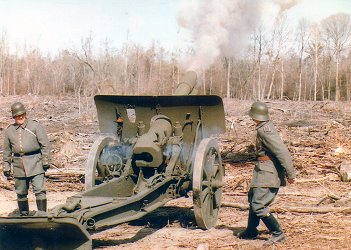 |
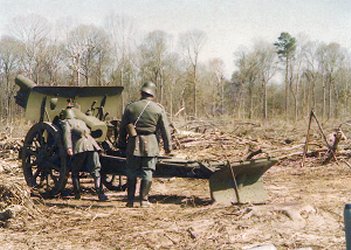 |
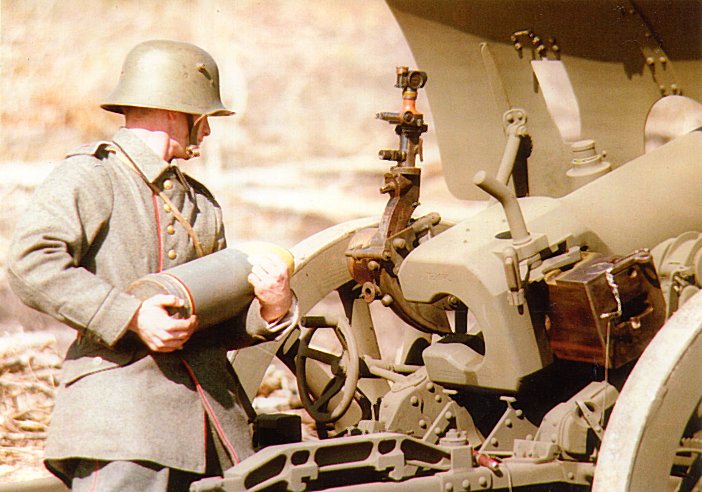
In this photograph Ralph Lovett simulates loading a Gr.12 Chlorine Gas shell (demilitarized) into the horizontal sliding wedge breech mechanism of the lg.s.F.H.”13/02. The range drum/sightmount and non-hinged shield are visible in the photo. This piece was one of the most complicated to restore and is among the earliest pieces acquired into the Lovett collection. There was a great deal of relief with the completion of its three year restoration.
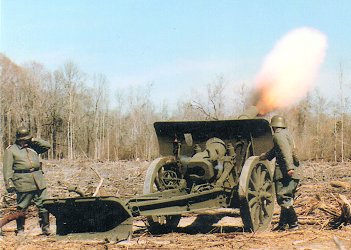 |
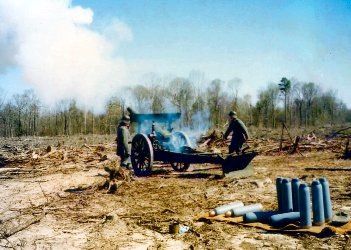 |
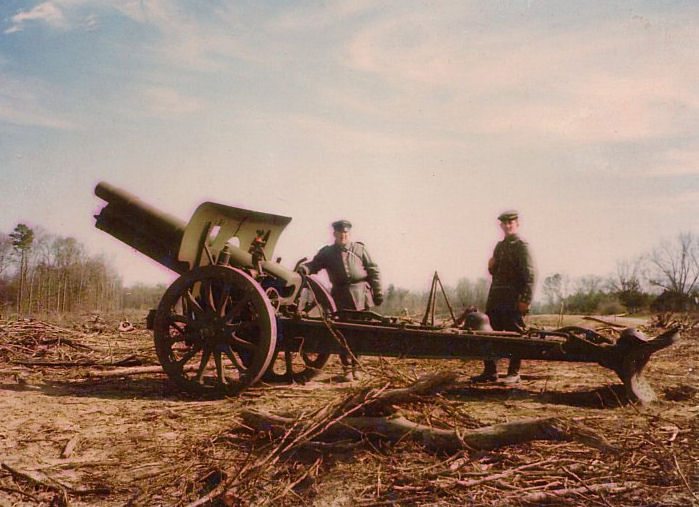
Development of the 15cm. lg.s.F.H. 1913 and lg.s.F.H."13/02
(by CW2 Ralph Lovett)
Despite the good service of the 15cm. s.F.H. 1913 there was need for improvement and modification of this piece. Two requirements brought about the long s.F.H. 1913 design. First, to increase range without the use of the exceptional charge. Second, to eliminate in-bore explosions. This weapon is essentially a long barrel variant of the standard “13. However, the following is a list of all changes incorporated into its design:35
| 1. | Enlargement of the shell chamber from 152 in 3 (2,5 dm.3) to 213 in3 (3,5 dm3) leading to a top charge gas pressure reduction from 34 084 psi (2350 bar) to 30458 psi (2100 bar). From the front breech face to the beginning of the grooves, the shell chamber was enlarged from 6.6 in (169 mm) to 8.3 in (211,5 mm.). The former exceptional charge was eliminated. The heavy field howitzer “13 (long) was designed for eight zone charges: Zone charge 8 (Velocity = 377 meters per second) Zone charge 7 (Velocity = 349 meters per second) As a result of these modifications, the recoil force at maximum recoil motion was reduced from 11500 kg. to 11000 kg. and 18250 kg. to 17500 kg. at minimum recoil motion. |
| 2. | The recoil energy was reduced by using a heavier and three calibers longer howitzer tube which at the same time helped to avoid excessive recoil fluid heating. Apart from several useful mount and carriage reinforcements it was necessary to modify the graduation drum of the sight and reinforce the equilibrator springs. |
| 3. | Since the rifling of front line howitzers were damaged especially after prolonged firing, broader lands with a more favorable profile were used. Land s and grooves were enlarged from 3.5 mm. to 5 mm. and from 9.55 mm. to 9.7 mm. respectively. The number of grooves was reduced from 36 to 32. |
| 4. | The initial spin was reduced from 5 degrees to 4 degrees and the exit angle from 10 degrees to 8 degrees. This led to a considerable service life increase of the tubes, and the number of in-bore explosions was minimized. These improvements led to a weight increase of about 90 kg. compared to the older field howitzer version with counterrecoil springs. (From 2110 kg. to 2210 kg. in firing position) By using a longer tube the trail pressure at 0 degrees elevation was reduced from 70 kg. to 50 kg.36 |
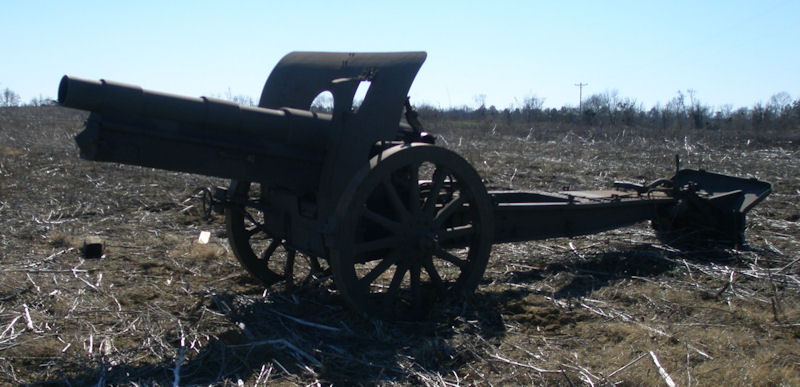 |
Due to difficulties in manufacturing the lg. s.F.H. 1913 and the limited number of facilities capable of producing a hydropneumatic counterrecoil, a variation of this design was developed by Krupp and designated lg. s.F.H. 1913/02. The most easily recognized changes in the “13/02” are removal of the layer seat and the hinge across the shield. A one-piece spade and trail plate was introduced for the “13/02 to check it from digging too deeply into the earth. The loading lever was eliminated. Another important but less obvious change is the use of a hydro-spring recoil in place of the hydropneumatic type. Recoil for the “”13/02’ was permanently long with 950mm of travel and required 26 liters of fluid in the recoil brake. The carriage was reinforced to withstand the recoil forces. Interestingly, the lg. s. F. H. 1913/02 in the author’s collection has recoil springs carefully marked lg.“13/02 and numbered with the many dots of a hand punch. This would seem to indicate that despite the fact that the “13/02 was introduced to speed production, significant individual care was taken with the springs by shop workers.
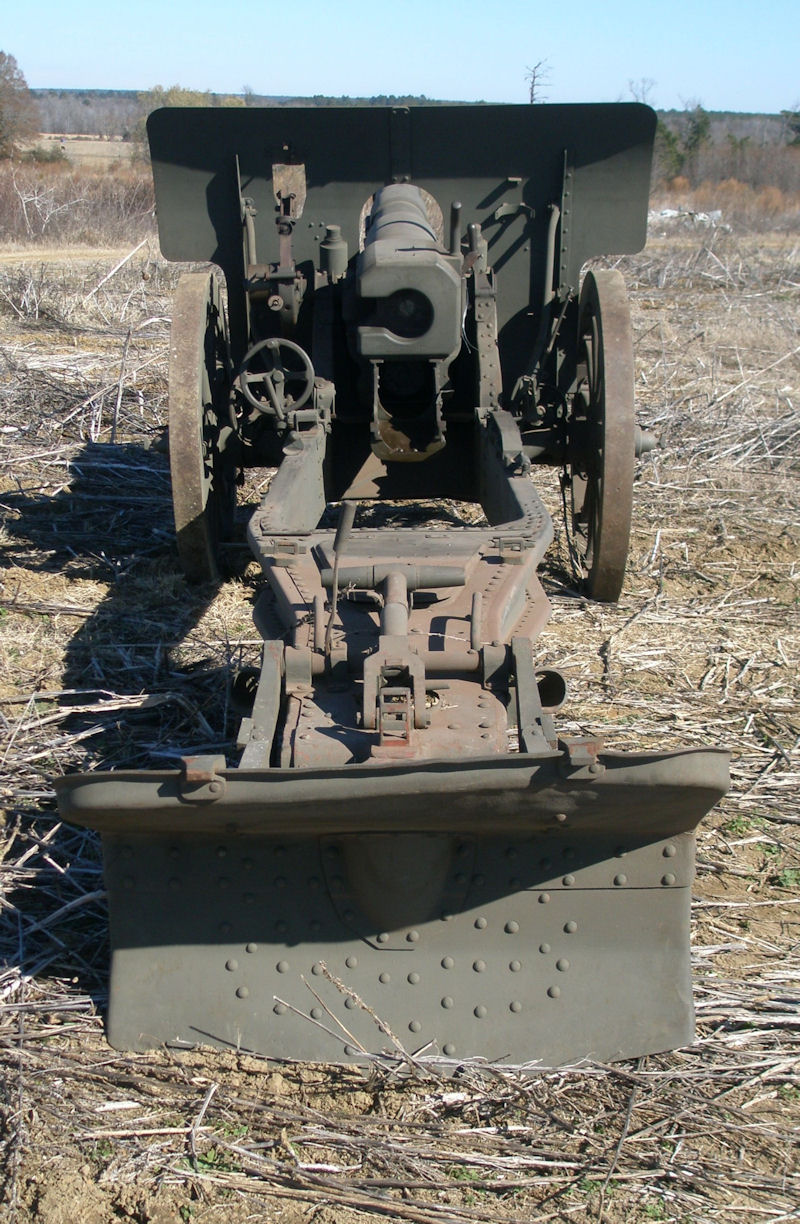 |
Within the 25 year development time of the s.F.H. 15cm series heavy
artillery progressed from having virtually no impact on the maneuver battle
to the dominant force, living up to its motto "Ultma Ratio Regius".
Nurturing this development was a long line of technical innovations.
These include improved aiming circles (directors), and panoramic howitzer
sights; use of meteorological data (MET), HE and chemical munitions, and
recoil systems (hydopnumatic and hydro-spring). Development of tactics
and techniques within this 25-year period surly went hand- in- hand with
howitzer development. At first just the act of quickly emplacing
batteries in the field and conducting indirect fire, then converging fires
not just of batteries but battalions became common. Still further,
coordinated fire planning supporting maneuver became a science.
Much of what we know as the “fundamentals” developed around
the Field and Foot Artillery howitzers of the German Army and especially
the s.F.H. series. The lg"13s and new s.F.H. models went on
to do the same in the Second Would War but with even greater need for
mobility, which they accomplished using horse teams just as in the Great
War. In the US, primarily because we were newcomers to the Great
War and were quickly versed in the merits of heavy artillery (the 155mm
and 60pounder) by the French and British, we see their weapons as the
pioneers of this technology. We seem to have forgotten that their
development was forced by the success of the German howitzers.
(See the "Development of the German 15cm." page for more information and the foot notes.)
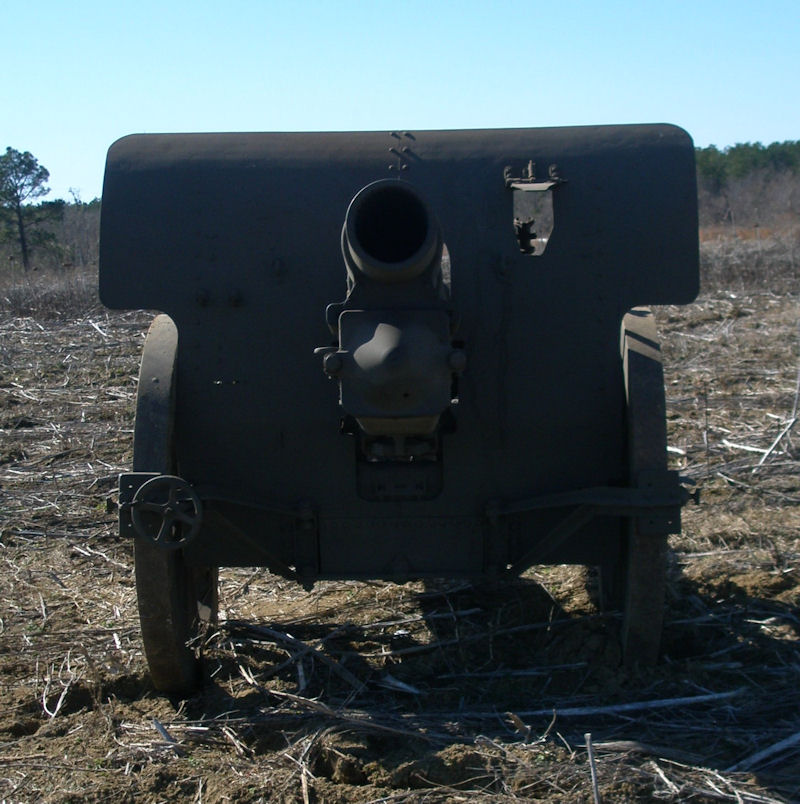 |
